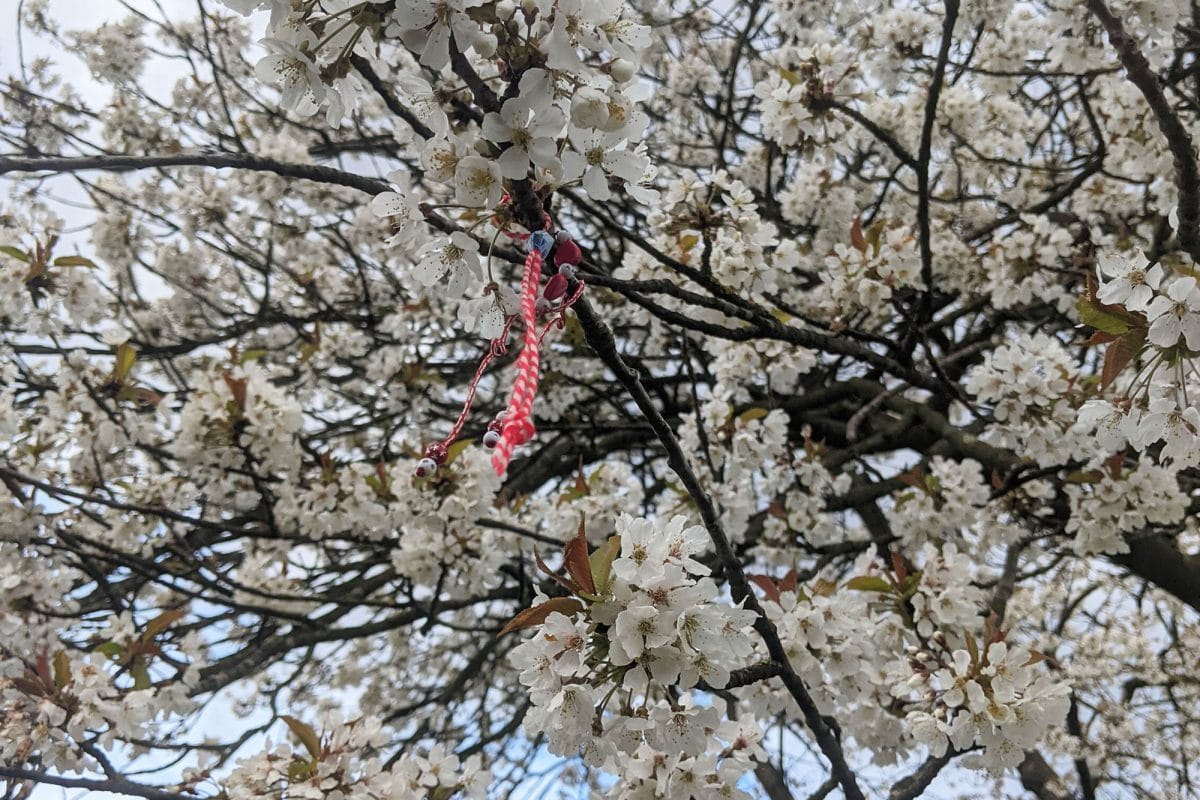Many of us look forward to the first signs of spring outside, after the long dark months of winter. In Bulgaria, they mark this time with a holiday and Martenitsa.
People make or buy martenitsa, which are simple thread bows, dolls, tassels or pom-poms, made from red and white yarn. These are given as gifts to loved ones, and are then worn from Baba Marta (Granny March) Day on 1 March, until the first signs of spring appear.
The threads are worn as a symbol of luck for good health, as a bracelet or pinned as a brooch. The different colours are thought to represent the male (white) and female (red).
Baba Marta is considered a temperamental woman.
She does her spring cleaning to shake off winter which can make the weather changeable, wet and windy, but her smile makes the sunshine come out.

The signs of spring can be seeing a tree start to blossom, or seeing a stork or a swallow. Once this sign of spring is spotted, the martenitsa is tied to a budding tree along with a wish, and the luck passes from the martenitsa to the tree.
Others leave their martenitsa under a stone, with the belief that the creature closest to it will determine their health and luck for the year – a worm or ant will mean a healthy, successful year, but a spider can mean trouble.
Similar traditions take place in Romania and Moldova with mărțișor, and martinka in North Macedonia, and the practise of making, giving and wearing martenitsa has been recognised by UNESCO as part of the Intangible Cultural Heritage of Humanity.


